For best exprience view on a desktop computer using full screen.
0%
For best exprience view on a desktop computer using full screen.
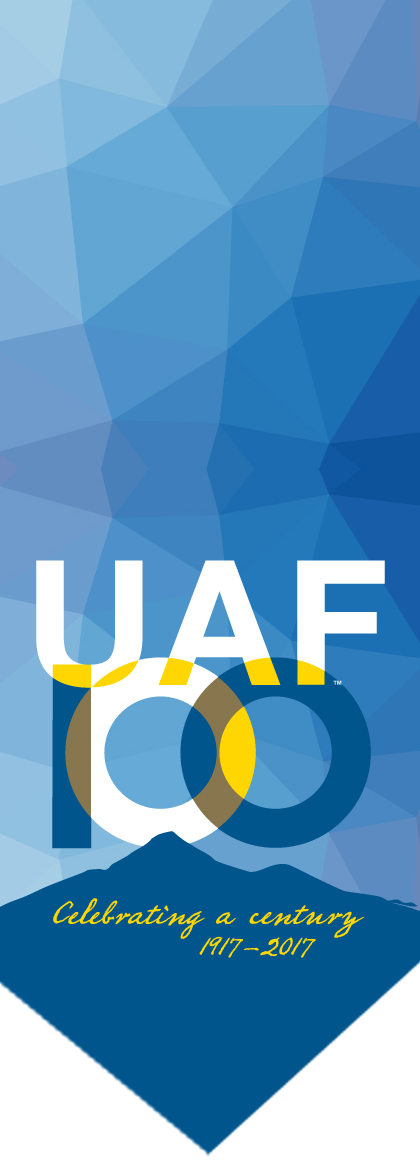
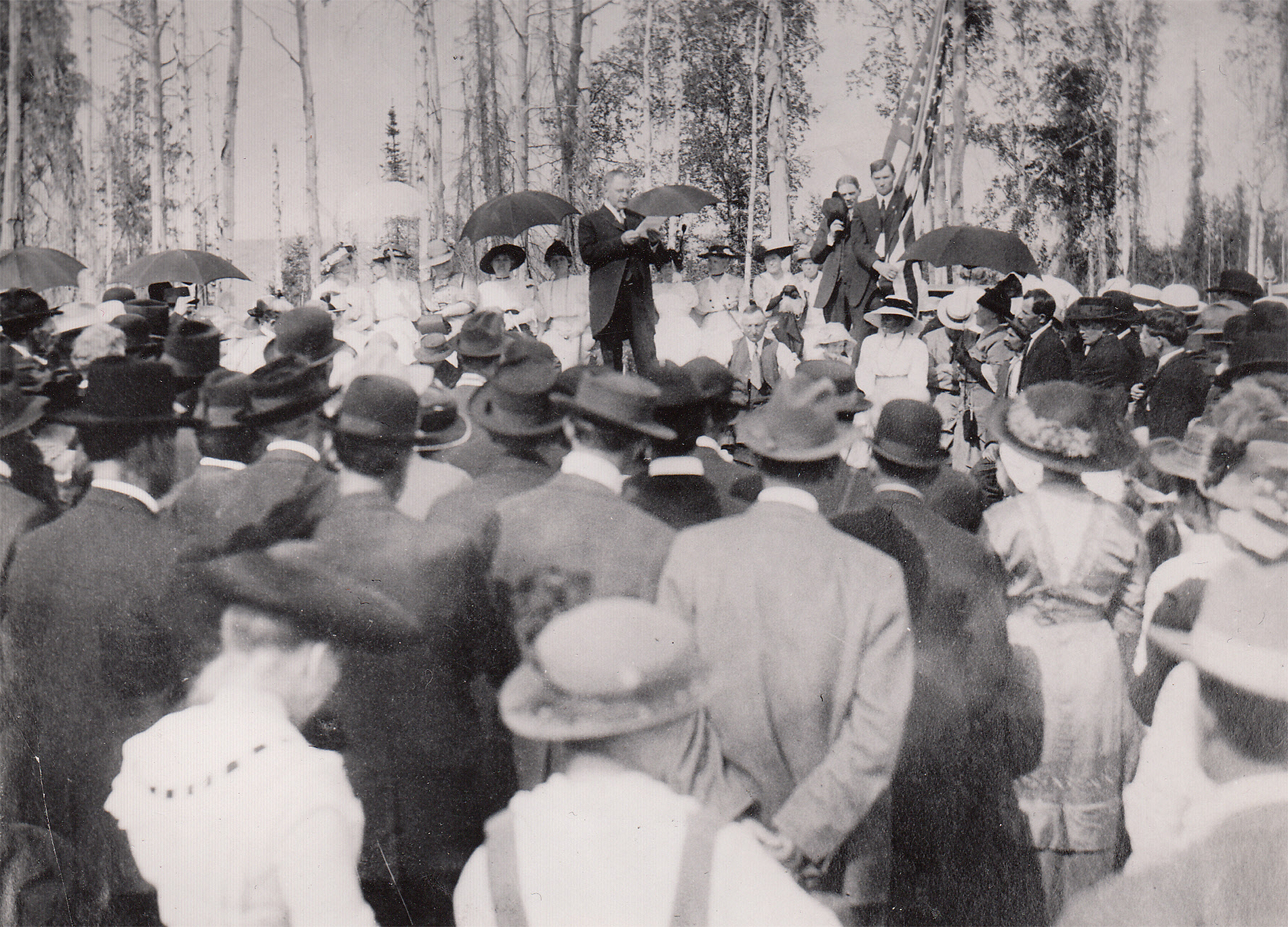
On July 4, he dedicated a cornerstone for the proposed school with a ceremony attended by about 300 people.
“We cannot wait for future generations to build nor for the slow growth of years,” Wickersham told the crowd. “Our homes are here now and our children are demanding the educational advantages which we had, and if we fail to meet the demand promptly there will be retrogression instead of progress in our new state.” In his private diary, the former judge noted that he had no legal authority to place the cornerstone. He described his efforts as a “bold bluff” to push the Alaska Territorial Legislature into creating the Alaska Agricultural College and School of Mines.
“There is no privately owned land in the Territory of Alaska upon which the Legislature of Alaska could locate an agricultural college or school of mines, so that we are obliged to turn to Congress if we are to get a [school] located there under any circumstances.”
— Wickersham, House debate, March 3, 1915
“I do not believe that now is the time to put an educational institution in the Territory of Alaska. With 35,000 people in the Territory, one-quarter as big as the United States, they could not find a man in a hundred square miles at this time. We had better wait until we develop the rich country in Alaska.”
— Falconer, House debate, March 3, 1915
Territorial Delegate James Wickersham’s quest to get land for a college drew much derision during congressional debates in 1915. Rep. Jacob Falconer, of Washington, said the territory had too few people and was too undeveloped. Rep. Patrick Norton, of North Dakota, said the choice of Fairbanks “savors altogether too much of special congressional legislation for the benefit of a particular city.” Wickersham responded with a telegram from the territorial governor and 19 of 24 legislators endorsing land held by the federal government’s agricultural experiment station, which had been established in 1906 near Fairbanks. Wickersham also arranged for President Woodrow Wilson’s administration to back the idea. Nevertheless, Alaska’s delegate sometimes seemed damned by the faint praise of his supporters.
“An agricultural college anywhere else in Alaska — and I’m not sure but one at this place — would be a joke,” said Rep. James Mann of Illinois. “But if it is to be located up there at all, at present, it ought to be located at the experiment station.” Despite such lukewarm endorsements, the Senate passed the bill Feb. 17. House members passed it at 4 a.m. before adjourning their March 3 legislative day. It was the last bill approved in the 63rd Congress. Wilson signed it later that day, March 4. (Click here for a longer version of this story.)
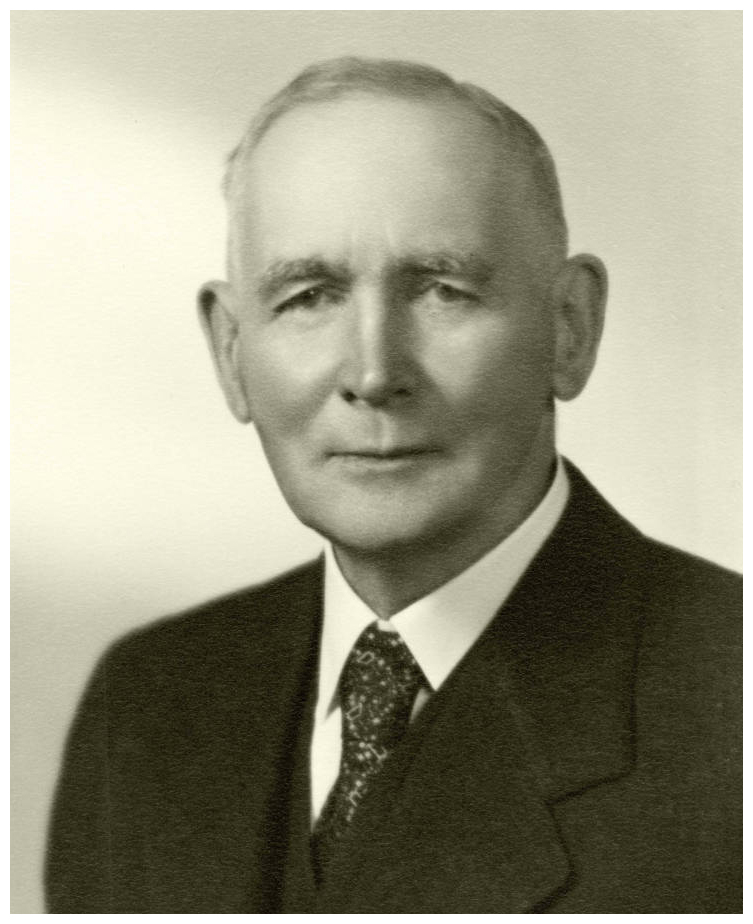
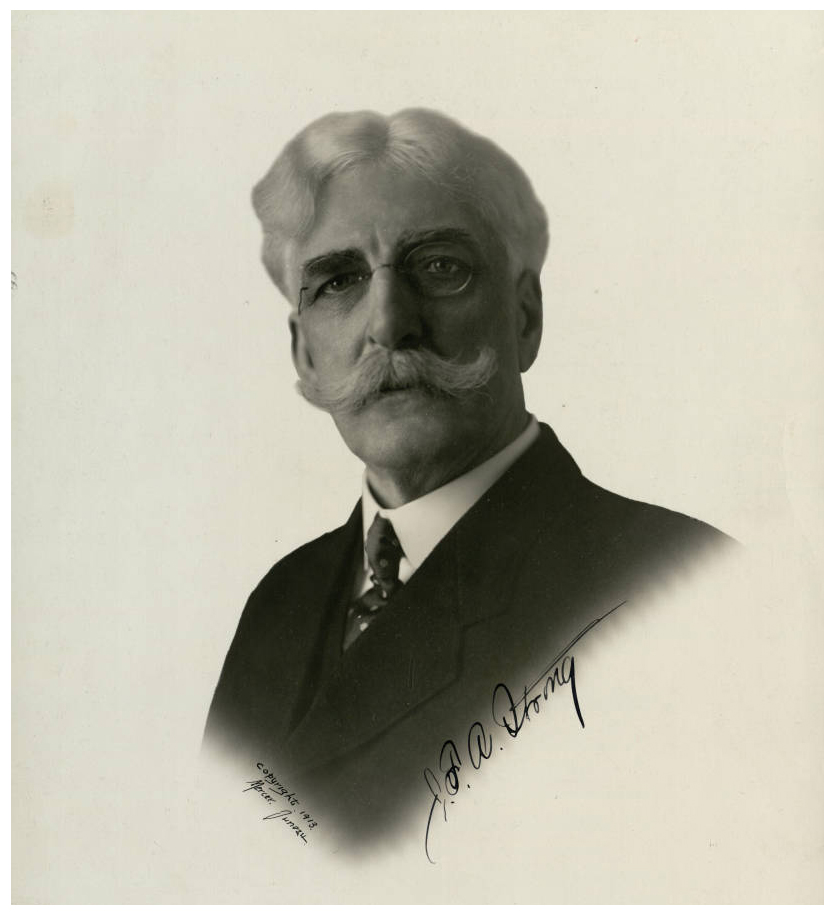
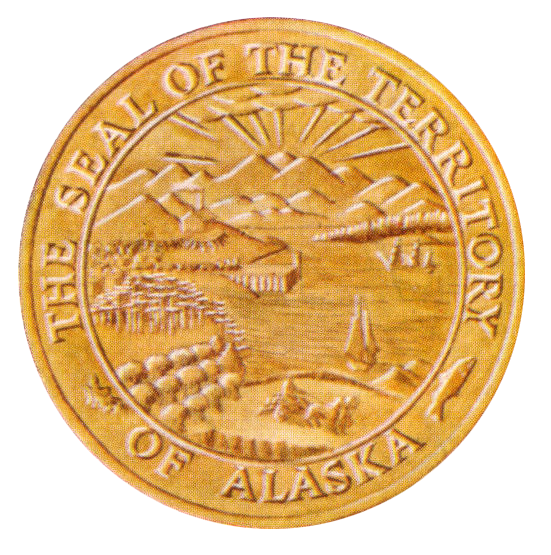
Wickersham promoted his vision of a college to the Alaska Territorial Legislature, but the idea again had detractors. The Anchorage Times said the proposal was designed to “loot the limited funds of the territorial treasury.”
Sen. John Ronan of Anchorage said Alaska should have a college but not in Fairbanks. The gold rush that created the town had passed. The college should go to the Matanuska Valley, Ronan said, not the “temporary placer camp” up north.
The 1917 legislature approved the bill with strong support from Fairbanks legislators, including Luther Hess, the House speaker and the husband of Harriet Hess. She had helped Wickersham select the cornerstone’s site and went on to be the longest-serving trustee and regent in the university’s history.
On May 3, 1917, Gov. John Strong signed the act establishing the Alaska Agricultural College and School of Mines, a federal land grant college committed to public service, teaching and research. The bill provided $60,000.
Excerpt from the Territory of Alaska Session Laws Resolutions and Memorials 1917. Downloaded from Hathi Trust Digital Library. Original from University of Minnesota.
Excerpt from the School laws of the territory of Alaska, 1917, regarding the Alaska Agricultural College and School of Mines (PDF)Downloaded from Hathi Trust Digital Library Original from the Library of Congress.
In 1918, the university trustees completed the first campus building, but they had no money to furnish or equip it. The legislature waited until 1921 to approve an emergency grant to finish what was known then simply as the Main Building, build a house for a president and hire staff.
“The best piece of news that Interior Alaska and Fairbanks in particular have received in many moons was the news that yesterday federal Judge Bunnell accepted the presidency of the Alaska Agricultural College and School of Mines.”
— Fairbanks Daily News-Miner editorial, Aug. 13, 1921
Trustees had created the shell of a college, but by 1921 they still hadn’t found someone to lead it.
Several were in a downtown drugstore discussing the matter when Charles Bunnell, a recently deposed judge, walked by.
Trustee Harriet Hess allegedly said, “There, of course, is the man we should get.” Bunnell accepted, and his subsequent 28-year presidency hasn’t been matched. Nor has Hess’ service as a trustee and regent — she remained on the board until 1951.
Bunnell didn’t have an easy start, though. Seven years earlier, he had run for office unsuccessfully against Alaska’s delegate to Congress, James Wickersham — considered the father of the college for his persistence in securing its first federal land grant. Wickersham immediately tried to convince regents to fire Bunnell, but Hess and four others stuck by their initial choice in a 5-3 vote.
“[Democratic officials] came to the northland as long as twenty years ago, but after they got on the federal pay roll they began to plan for the day when they were about to be but ordinary citizens … Consequently, they are nearly all now in a position to move on. But the notable exception is Judge Charles E. Bunnell. … And do you wonder why? Judge Bunnell has just been placed on the territorial pay roll by a few of Governor Riggs’ appointees as president of the Agricultural College and School of Mines, at Fairbanks.”
— Juneau Sunday Capital, Aug. 21, 1921
“The opening of this institution, the first of higher learning and technical training in the Northland, is a potent sign of the times. It speaks progress. It tells the world that Alaska is going ahead. It proclaims, in its name, the fact that agriculture and mining are twin resources of this rich domain. It gives denial to the popular fiction that Alaska is a forbidding, frozen upheaval of ice and snow. It emphasizes the real Alaska.”
— Gov. Scott C. Bone’s speech
“God IS good to Fairbanks and you know it. … With Jupiter Pluvius emptying his water wagon all over the country until within an hour of the start of the procession, the Alaska Agricultural College and School of Mines opened in a blaze of glory, God sent an avalanche of sunshine, and there wasn’t a hitch or the lack of a thrill in every moment of the celebration.”
— Fairbanks Daily News-Miner, Sept. 14, 1922
Passengers depart a Brill Car (trolley operated by the Alaska Railroad) at College Station at the Alaska Agricultural College and School of Mines (University of Alaska Fairbanks).
Sept. 13, 1922, began cold and rainy, poor weather for an dedication day celebration. A few university staff “held a doormat of a dedication on the front steps and grounds for fear it would get no further than that because of the weather,” according to the next day’s newspaper.
Sunshine arrived, though, and all proceeded according to plan. Gov. Scott Bone, President Bunnell, the regents and the faculty sat on a speaker’s stand before the Main Building. A crowd of several hundred people who had driven or ridden a train from town gathered on the grass.
James Wickersham, who had secured the college’s land seven years earlier as the territory’s delegate to Congress, was not present. He did visit Fairbanks on a business trip from his home in Juneau later that summer and noted in his diary that he happened to meet Bunnell, “who grunted when I spoke to him.”
Six students joined six faculty members and Bunnell on the first day of classes, Sept. 18. The student body later in the school year grew to 15 with the arrival of latecomers.
Registration was $2, but tuition was free.
The new college catered to local miners in a winter short course on prospecting. Professor Ernest Patty figured “men from the hills” wouldn’t enjoy a lecture, so he invented the game of rock poker to help the miners identify minerals. They would deal out rocks instead of cards. Players had to follow rock “suit,” only changing minerals if they could name the new one played. The winner got lunch or cigars. Patty wrote that a fight once nearly broke out over play of the disputed “wild” rock, diorite.
The AACSM produced three graduates in its first three commencements, 1923-1925. Their last names — Shanly, Thomas and Cameron — are memorialized in the east-west aligned streets in College, the community at the base of the campus hill.

After driving ambulances in World War I, Jack Shanly came to the AACSM already holding enough credits from Cornell University to graduate in one year. He homesteaded the land that today lies beneath most of the community of College, just east of the Fairbanks campus. After a federal civil service career, he died in 1971 in New York.

Margaret Thomas grew up in Fairbanks; her stepfather was an assistant U.S. attorney in town. She married naturalist Olaus Murie after graduating, and they became nationally known wilderness advocates. She died in Wyoming in 2003 at 101. UAF named a building on West Ridge for her.

As a young woman, Jamie Irene Cameron attended Kansas State Agricultural College and briefly taught in Hawaii. Her Kansas connections may have drawn her to Fairbanks; several KSAC alumni worked at the AACSM. After earning a home economics degree, Cameron returned to Hawaii and lived on Oahu into her 80s.
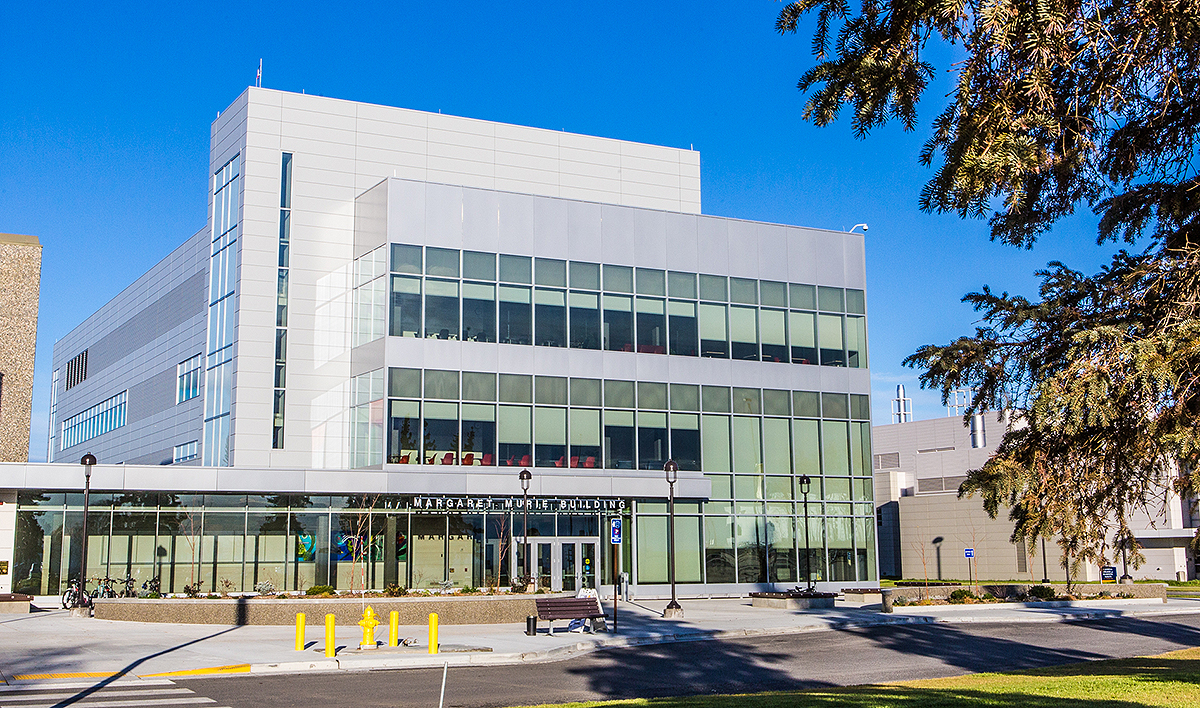
The Murie Building, opened in summer 2013, is home to UAF Department of Biology and Wildlife.
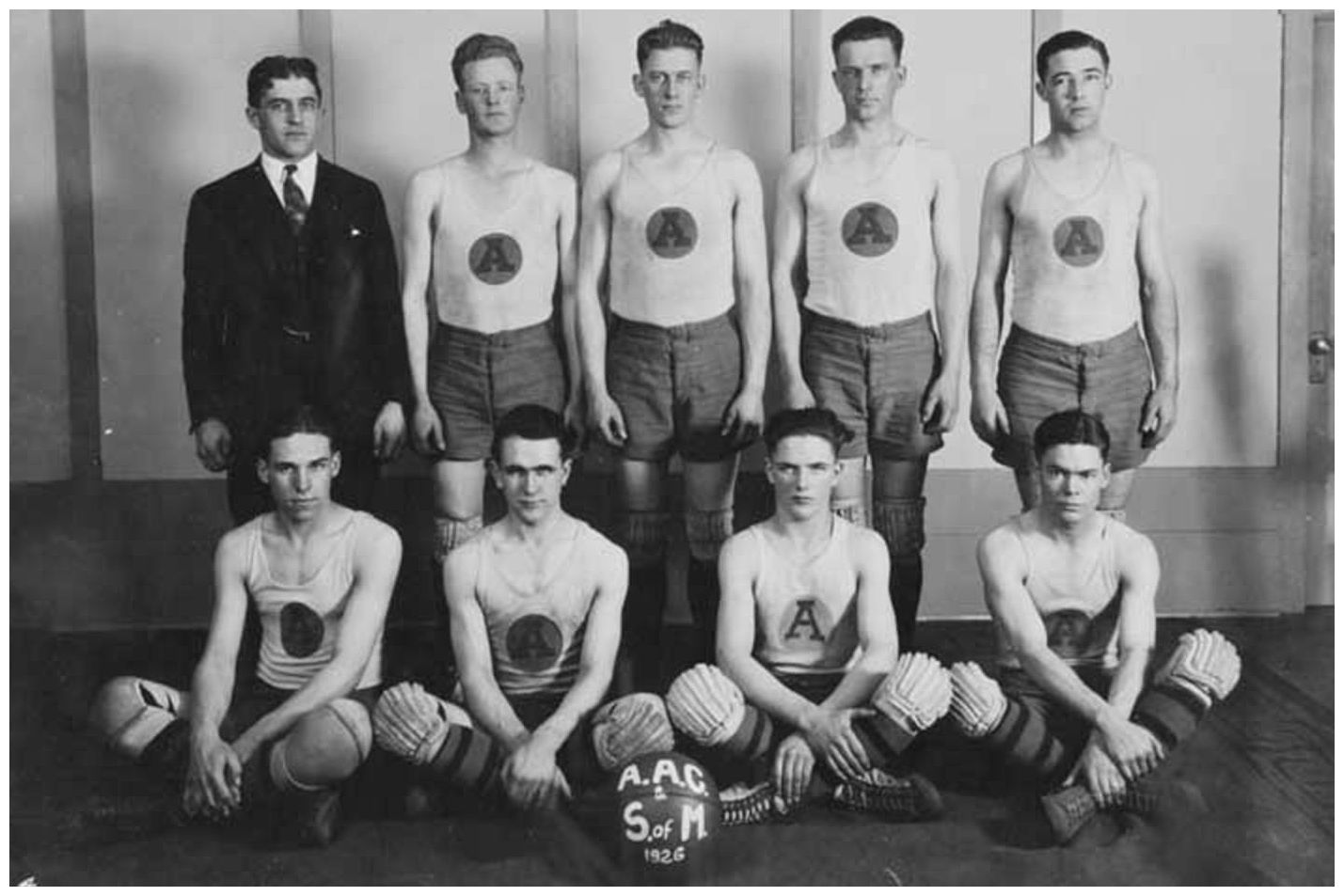
Men's basketball team 1926. Standing from left to right: Ken Abell (coach), Verne Reed, Ted Loftus, Art Loftus, George Lingo. Sitting: Richard Boyd, Richard Anderson, Donald MacDonald and Jack Boswell.

“My dear Mr. Bunnell, I have your letter of October 19th [1926] and am glad to hear that your college is becoming more popular and that your finances are such that you can pay for amusements for the students.”
— Letter from Stephen Birch, president of the Kennecott Copper Corp., to AACSM President Charles Bunnell
“We paid to the Alaska Steamship Company for fares from Seward to Ketchikan and return the sum of $890.00, so as a matter of fact all we took in with the exception of $13.90, that is on this part of the trip, went to the Alaska Steamship Company.”
—Letter from AACSM President Charles Bunnell to Stephen Birch, whose copper company was a subsidiary of the Morgan and Guggenheim families’ Alaska Syndicate, owner of the Alaska Steamship Co., Jan. 12, 1927
The student association organized the first men’s basketball team in 1922; Bunnell called it the “Full House Squad — three of a kind and a pair,” because its players were brothers Art, Ted and Jule Loftus and brothers Bob and John McCombe. They took on teams from town, the Army Signal Corps and the high school. A women’s team soon followed. Both traveled to Anchorage in the 1924-1925 school year, playing the high school team and drawing high praise from the Anchorage Times.
The potential in the publicity wasn’t lost upon Bunnell. Support for college funding remained weak in the Territorial Legislature, especially among members from distant Southeast Alaska. So in 1926 Bunnell decided the men’s team should tour the area.
The basketball games went over well in all the communities, where the AACSM team continued playing high school and town teams. The college team — Ted and Art Loftus, Jack Boswell, George Lingo, Richard Boyd, Richard Andersen, Donald MacDonald and Verne Reed — won 10 of the 16 games with help from Coach Ken Abell.
However, the trip didn’t go over well with one important college donor — Stephen Birch, president of the Kennecott Copper Corp. Birch had given a total of $3,000 to the college for books and mine building equipment in 1923 and 1924. In fall 1926, Bunnell wrote Birch a letter describing the college’s progress and the plans for the basketball tour. Bunnell also asked for more help.
Birch responded with a sarcastic one-sentence letter congratulating Bunnell on having enough money to spend on “amusements for the students.” Bunnell, in his reply, explained that student fundraising and ticket sales covered the trip’s cost. Bunnell also said most businesses along the way gave the team discounts. An exception, he noted pointedly, was the Alaska Steamship Co., which, like Birch’s copper company, was owned by J.P. Morgan and Simon Guggenheim’s Alaska Syndicate. The steamship company charged the team full fare. Bunnell did not mention that he also had personally covered part of the cost.
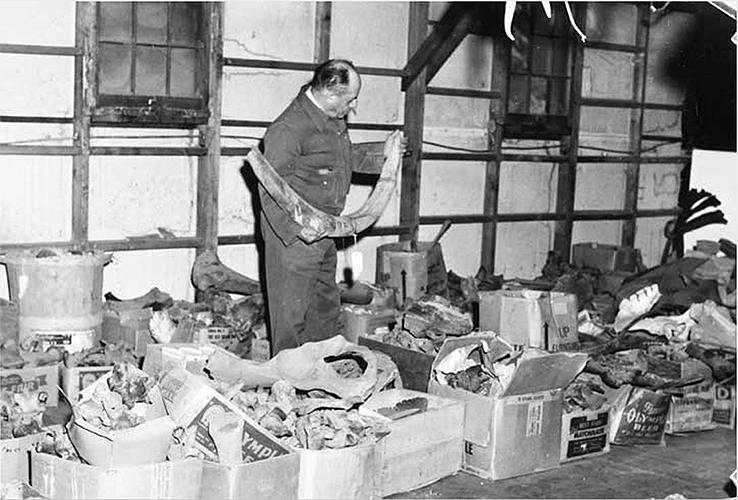
Otto Geist emigrated in 1910 from Germany, where he had been trained as a machinist. In America, he worked as a farmer, mechanic, soldier and trucker before heading to Alaska. While working on a Yukon River sternwheeler in 1924, Geist met naturalist Olaus Murie and his wife Mardy, the AACSM’s second graduate. They convinced Geist to visit university President Charles Bunnell and show him the artifacts he had collected. Bunnell encouraged Geist to do more collecting and, in 1927, backed the first of his many expeditions. Geist, often working long days with no compensation other than his expenses, returned with many tons of material of both human and animal origin.
This early style of collection later became controversial for its disregard of indigenous people’s interests. At the time, though, Geist was honored by some communities. During his 1927 trip, a St. Lawrence Island tribe adopted him with the name “Ahgvook,” which means “whale.” That became the title of a biography written by Charles Keim, a UAF journalism professor.
Geist also collected so many mammoth tusks from mines around Fairbanks that about 30 were buried to foil thieves. But the pit’s location was lost.
“Those tusks are still there,” said Leo Rhode, former student and regent, in a 1981 interview. “We should have put iron in with them so they could be found with a metal detector.”
Many of Geist’s artifacts can still be seen at the University of Alaska Museum of the North.
A film clip of archeologist Otto Geist cleaning samples and shaking the hands of local villagers of Kukulik and Gambell,(Alaska Film Archives, University of Alaska, Otto William Geist Collection).
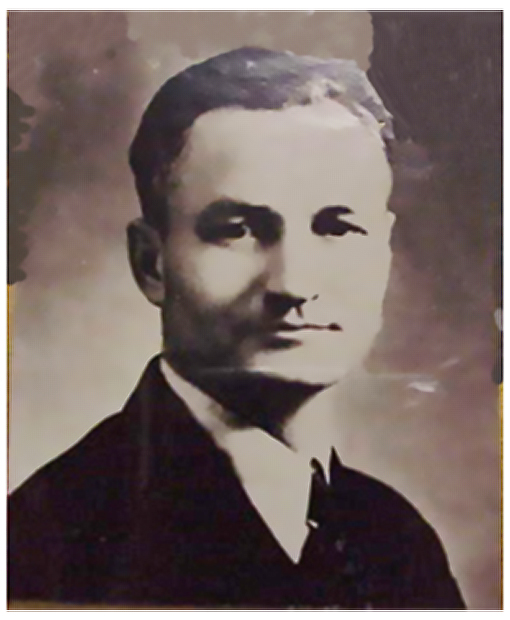
Professor Veryl Fuller, under contract with the federal Department of Terrestrial Magnetism, in 1930 began setting up an auroral observing station on campus and another at 11-mile Richardson Highway.
Professor Fuller and his students took thousands of simultaneous photographs, intending to use them to triangulate the height of the aurora. Fuller tragically died of a heart attack at age 39 before the work was done, but analysis of the pictures confirmed that the aurora borealis danced above Fairbanks at the same altitudes measured earlier in Norway — about 100 kilometers.
The university today remains an international leader in the study of the aurora and ionosphere.
President Bunnell successfully lobbied the federal government to transfer control of its agricultural experiment farm to the college. The farm had been created in 1906 to develop northern crops and farming techniques. Congress granted the land under the farm to the college in 1915, but the U.S. Department of Agriculture still owned the facilities.
Bunnell wanted the farm to supply food for the campus dining room, which was so short-funded that he had personally paid for its operation in 1929.
The farm obtained six Holstein cows in its first year under college ownership. One was named Highland Grove Fayne Duchess 2nd, half-sister to the 1922-23 all-American show cow Tillamook Daisy Butter King de Kol, according to the campus newspaper.
Operating the farm brought the college several small but annual federal grants, which helped keep the institution afloat through the Great Depression.
“This addition of milk to the daily diet of the collegians is of great value, and those who have faith in this program are to be commended.”
— The Farthest North Collegian
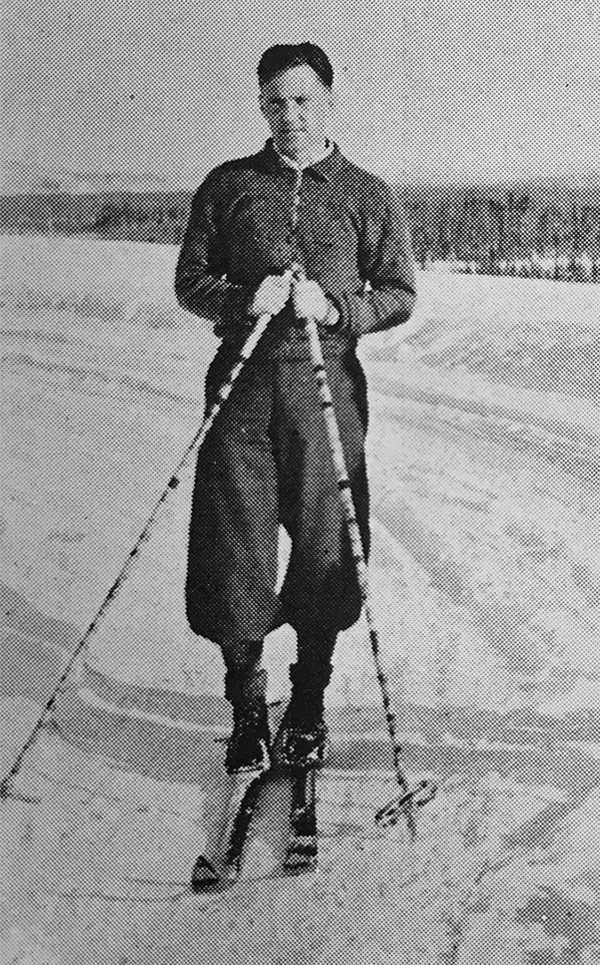
Cross-country skiing’s popularity got a big boost from student Ivar Skarland, a native of Norway. After receiving his bachelor's degree from the college, he went to Harvard to study anthropology and spent summers in the field in Alaska. He returned in 1942 to teach at the college in Fairbanks.
Anthropology student Ivar Skarland’s order of seven pairs of cross-country skis arrived from his home country of Norway in January 1934. That spring, Skarland and fellow student George Karabelnikoff cut the first ski trail from the center of campus out past the experiment farm to Smith Lake and back along the ridge.
Skiing became not only a popular campus activity but also a method of reaching local residences and businesses. The trails gradually expanded throughout the wooded campus and the private and public property to the north. They remain a unique and popular feature of campus to this day.
Skarland, after earning a degree at Harvard, returned to teach anthropology at the college for many years. While at UAF initially, he had studied under Froelich Rainey, the university’s first anthropology professor who gained international prominence and later started the nationally broadcast CBS archaeology quiz show “What in the World?”
After returning to UAF as a faculty member, Skarland lived in the cabin Rainey built in 1936 on the ridge west of what was then the main campus, along one of his beloved ski trails where people could stop in for a warm-up. The renovated cabin, still used today, sits just off the east end of the Cutler Apartment Complex. Students asked that it be named for Skarland after his death in 1965.
Skiers climb and descend Birch Hill near Fairbanks in winter 1935-1936. (Alaska Film Archives, University of Alaska).
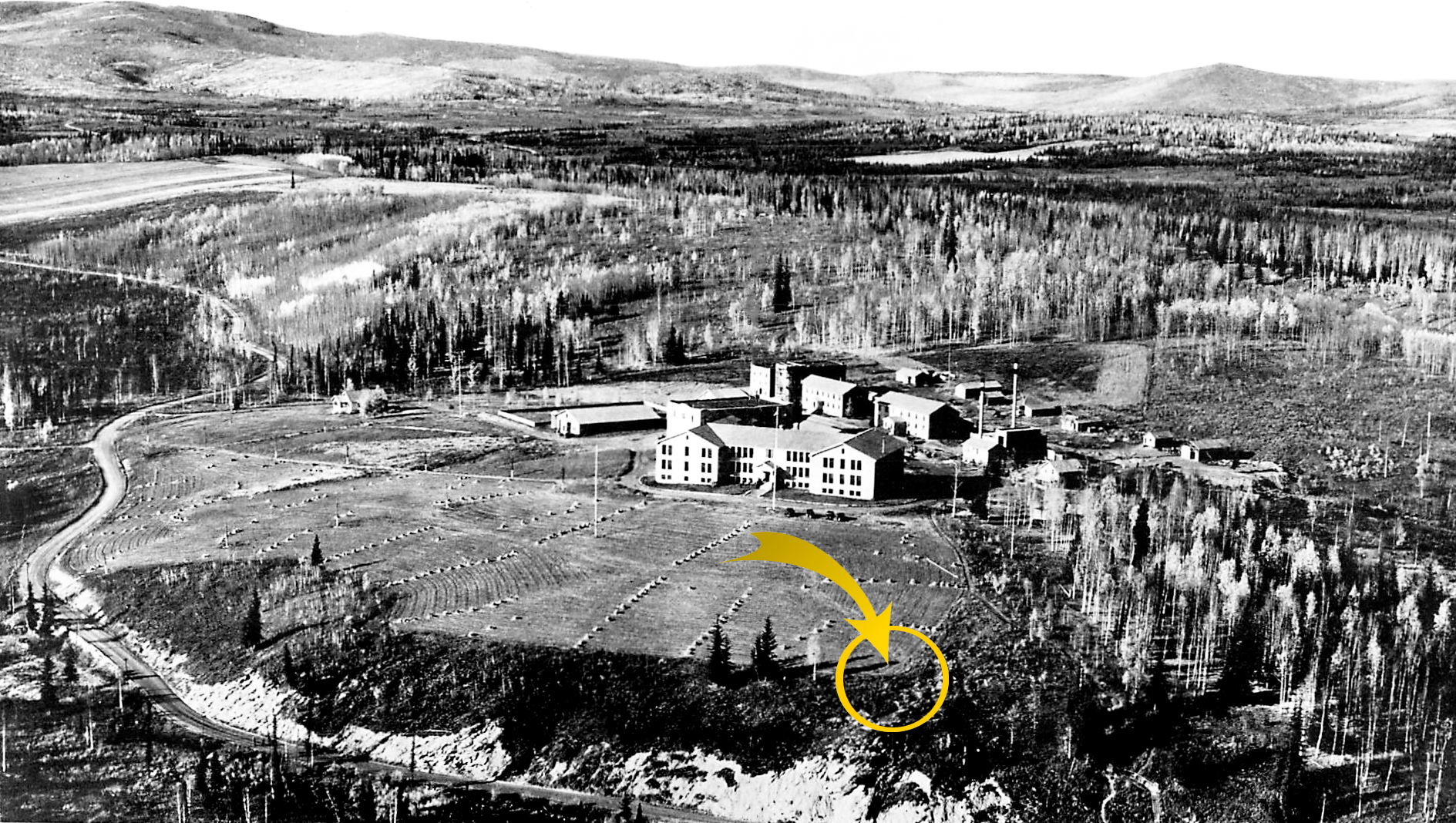 The location of the first controlled excavation of what came to be called the Campus Site.
The location of the first controlled excavation of what came to be called the Campus Site.
From the 1930s to the 1990s, stone tools and other artifacts dating back thousands of years were excavated from the east end of the university’s ridge.
The first controlled excavation of what came to be called the Campus Site discovered numerous ancient artifacts buried in the soil above the bluff on the east end of the campus ridge. The student archaeologists sent the stone tools off to the American Museum of Natural History in New York, where the staff noted they perfectly matched specimens from Asia’s Gobi Desert. It was the first hard evidence supporting the idea that people had crossed the Bering land bridge to North America.
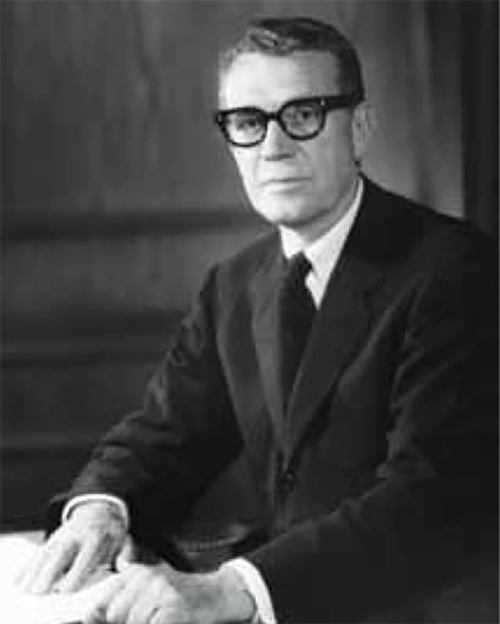 Professor Froelich Rainey
Professor Froelich Rainey
At the Campus Site, UA anthropology Professor Froelich Rainey began more extensive work in 1936, uncovering about 500 artifacts. Additional digs through the 1990s unearthed a total of more than 9,000 stone tools, charcoal pieces and bones. Archaeologists still debate the exact ages of the artifacts but agree that the site was used by indigenous people for many thousands of years.
Today’s local indigenous Dene people call the entire university hill “Troth Yeddha’,” meaning “wild potato ridge,” because they collected such roots in the area. The federal government officially adopted the name in 2013.
"What is Troth Yeddha’? This word [came] from long time before the white people ever come around here. … Our great-, great-grandfather pick wild potatoes on this hill here. … That’s the reason why they used to camp on that lake, Troth Yeddha’ Mene’. They paddle up that [creek] Troth Yeddha’ No’ to get to this hill."
— Chief Peter John of Minto, 1994 Rural Student Services Native Summit at UAF.
The Territorial Legislature, acting without a formal request from the university president or regents, approved a bill that renamed the Alaska Agricultural College and School of Mines, making it the University of Alaska.
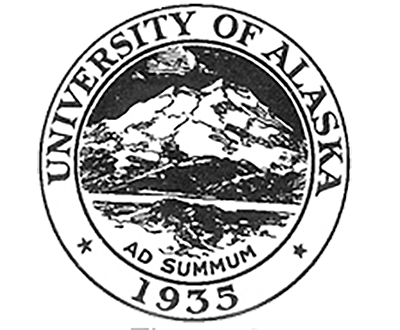
Gov. John Troy signs the bill renaming the Alaska Agricultural College and School of Mines as the University of Alaska on March 12, 1935.
In early 1935, Jack Boswell wrote the regents as alumni association president, asking that they adopt “University of Alaska” as the college’s new name. The regents, meeting in February, didn’t vote on the idea.
However, Regent George Lingo, who also was a legislator, introduced a bill to make the change. By early March, his bill had passed both houses of the Alaska Territorial Legislature. Gov. John Troy signed it on March 12. The name change was effective July 1.
Back on campus, the swift change caught many by surprise. “Something that gives us no end of worry is to think of becoming universitarians,” wrote Farthest North Collegian columnist Perk Lucha after the news arrived. “We just have to get busy and find out all we can about them, how they look and act and so on.”